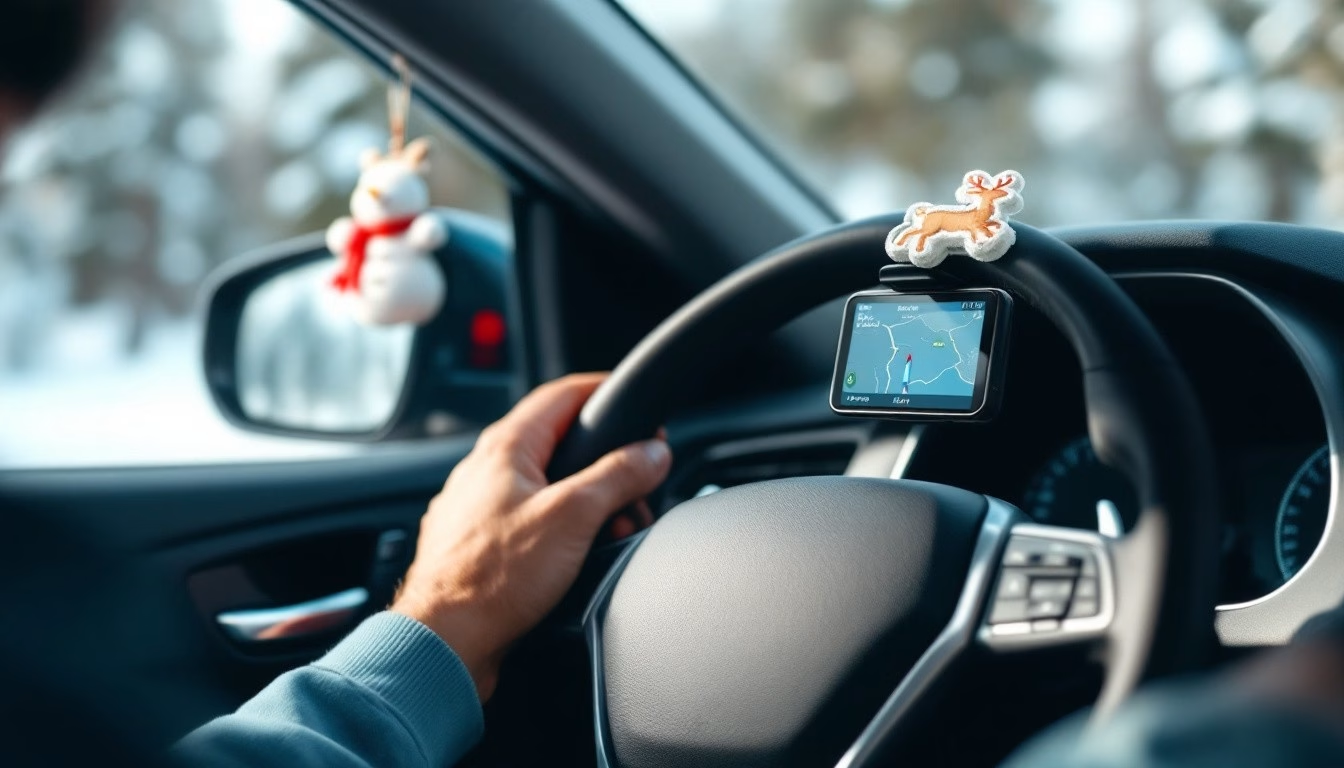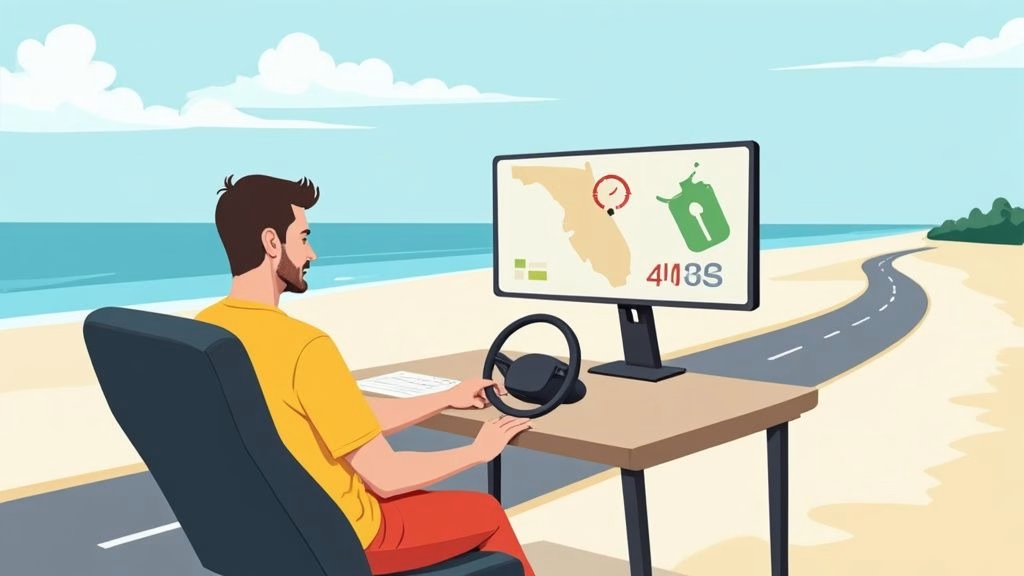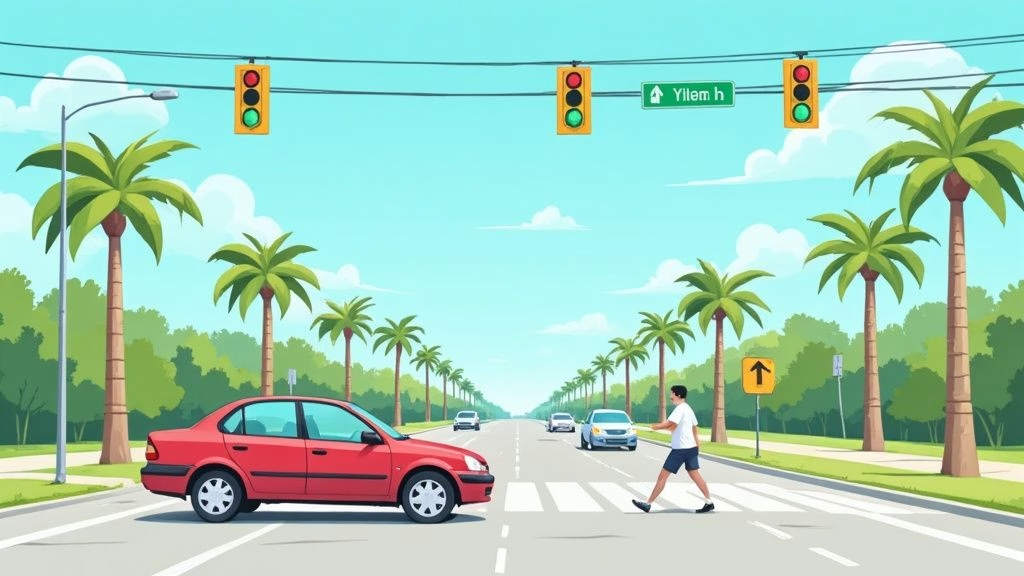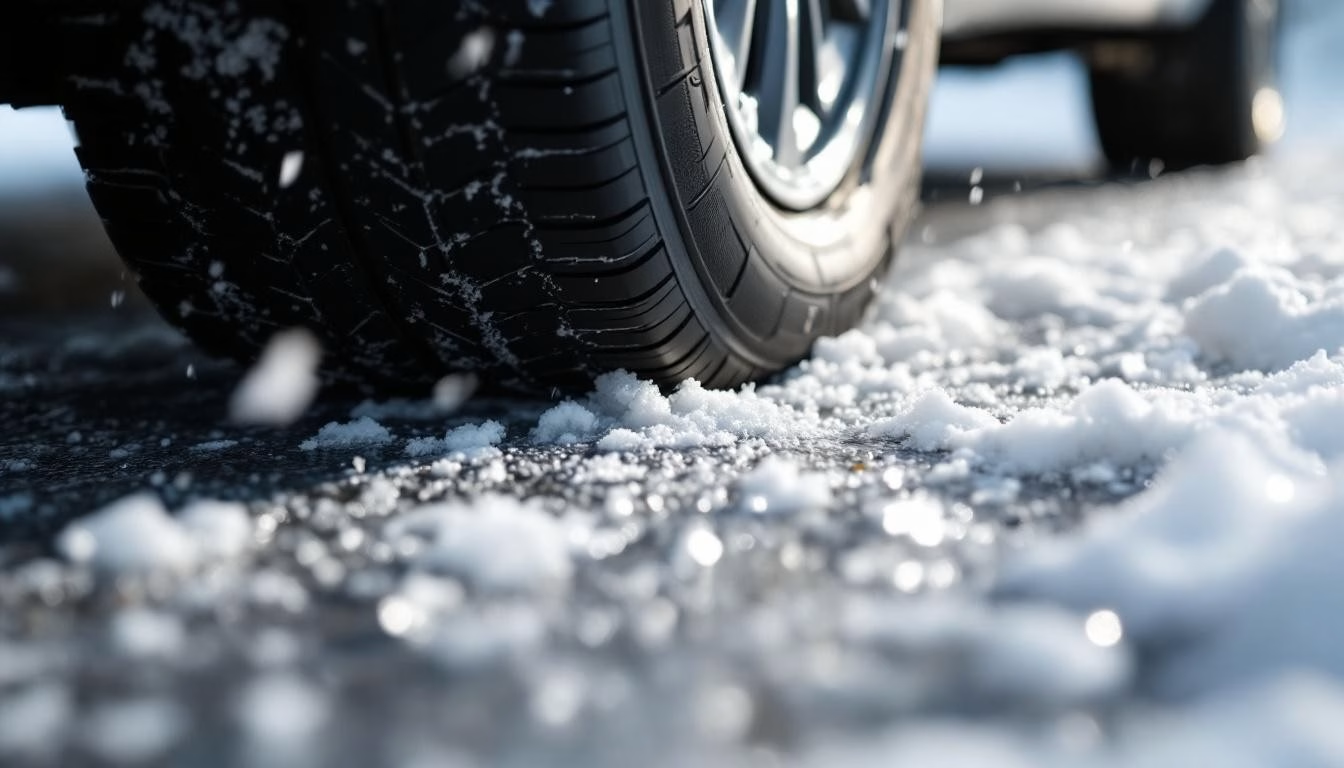Holiday travel brings unique challenges that put millions of drivers at risk. Traffic volumes spike by 25% during peak holiday periods, while weather conditions and driver fatigue create dangerous combinations on the road.
We at floridadetscourse.com know that preparation makes the difference between a safe journey and a potential disaster. These safe driving tips for the holidays will help you navigate busy roads and arrive at your destination safely.
What Makes Holiday Driving So Dangerous
Holiday driving transforms ordinary roads into hazardous zones where multiple risk factors converge simultaneously. Memorial Day Weekend leads the deadliest holidays with an estimated 443 fatalities during the holiday period, followed closely by Labor Day and the Fourth of July. Christmas Day sees a 32% spike in crashes compared to other December days, with 65.5% of these accidents occurring on wet, snowy, or icy roads based on Motive’s 2023 Holiday Outlook Report.
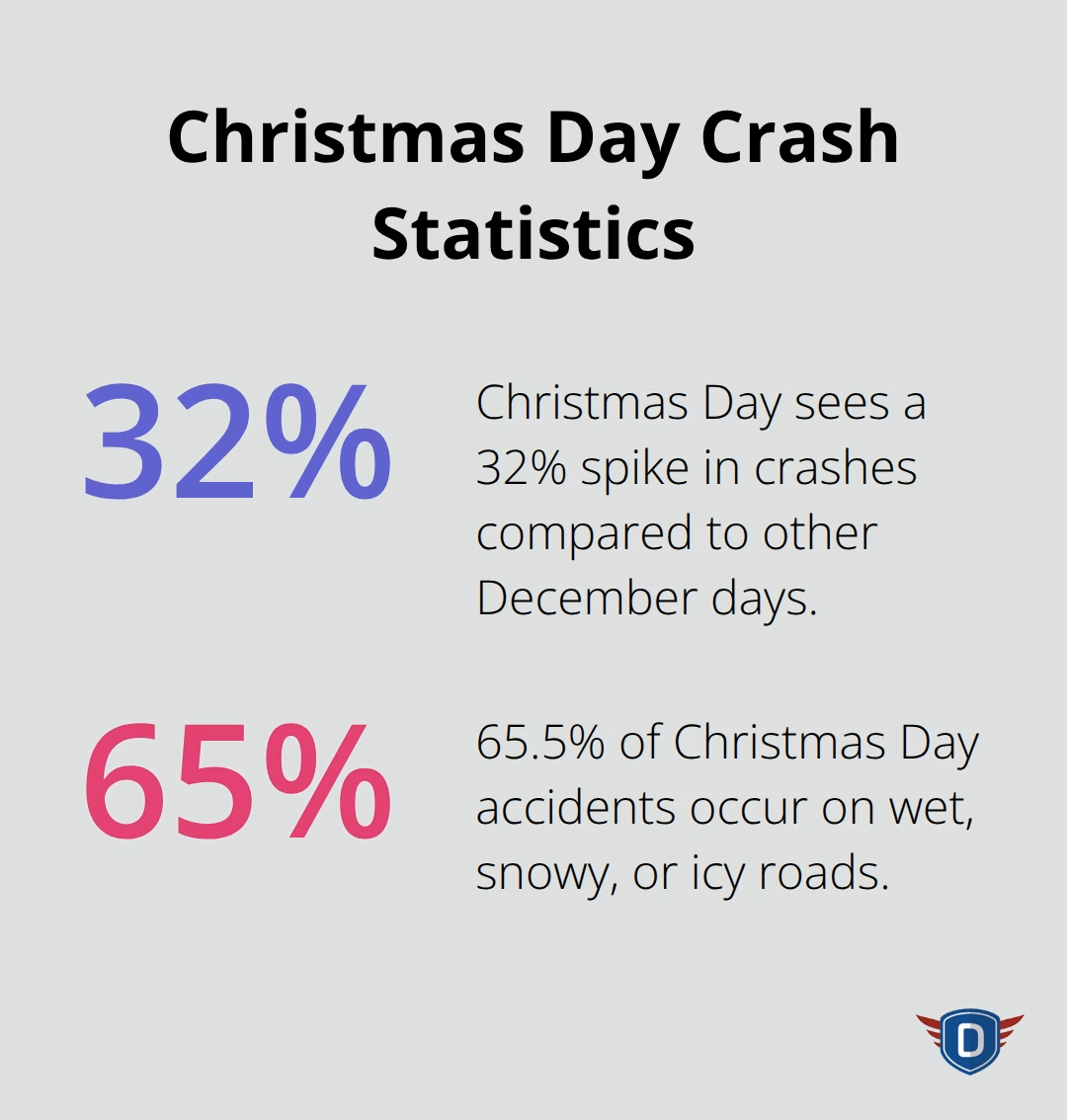
Traffic Volume Spikes Create Collision Zones
Peak holiday travel periods witness traffic volumes surge by 25%, which creates dense corridors where minor mistakes become major accidents. Houston, San Antonio, and Los Angeles rank as the most dangerous cities for holiday driving, while Interstate 10 from California to Florida becomes a particularly hazardous route during Thanksgiving and Christmas. The Southeastern United States shows the highest accident probability during holidays, with nearly 47% of all collisions happening after dark despite heavier daytime traffic.
Weather Conditions Amplify Road Dangers
Winter conditions contribute significantly to road dangers, with 24% of weather-related vehicle crashes occurring on snowy, slushy or icy pavement and 15% happening during snowfall or sleet. Icy roads alone cause approximately 1,836 deaths and 136,309 injuries annually-a fatality count 3.6 times higher than all other weather hazards combined. Snow and ice reduce traction significantly, while temperature drops cause tire pressure to decrease and car batteries to lose power.
Impaired and Distracted Drivers Pose Greater Threats
Blackout Wednesday before Thanksgiving kills around 41 people in drunk driving accidents according to NHTSA data, while Texas sees a 33% increase in alcohol-related crashes, injuries, and fatalities during holidays. Speed violations increase by 10% leading up to Christmas, with even slight speed increases doubling crash risk as drivers rush to meet holiday deadlines. These statistics highlight why proper preparation and defensive techniques become essential for safe holiday travel.
How Do You Prepare for Safe Holiday Travel
Pre-Trip Vehicle Inspection Prevents Roadside Emergencies
Your vehicle requires a thorough inspection before holiday travel begins. Check tire pressure monthly as cold temperatures reduce pressure significantly, and inspect tread depth with a penny test – Lincoln’s head should remain partially covered when you insert it upside down. Replace tires over six years old or those that show wear patterns. Test your battery and charging system since cold weather reduces battery power significantly. Check all lights including headlights, taillights, brake lights, and turn signals. Replace windshield wipers and fill the reservoir with de-icing fluid. Verify oil levels, brake fluid, coolant, and other essential fluids. A pre-trip inspection takes 30 minutes but prevents costly breakdowns during peak travel periods.
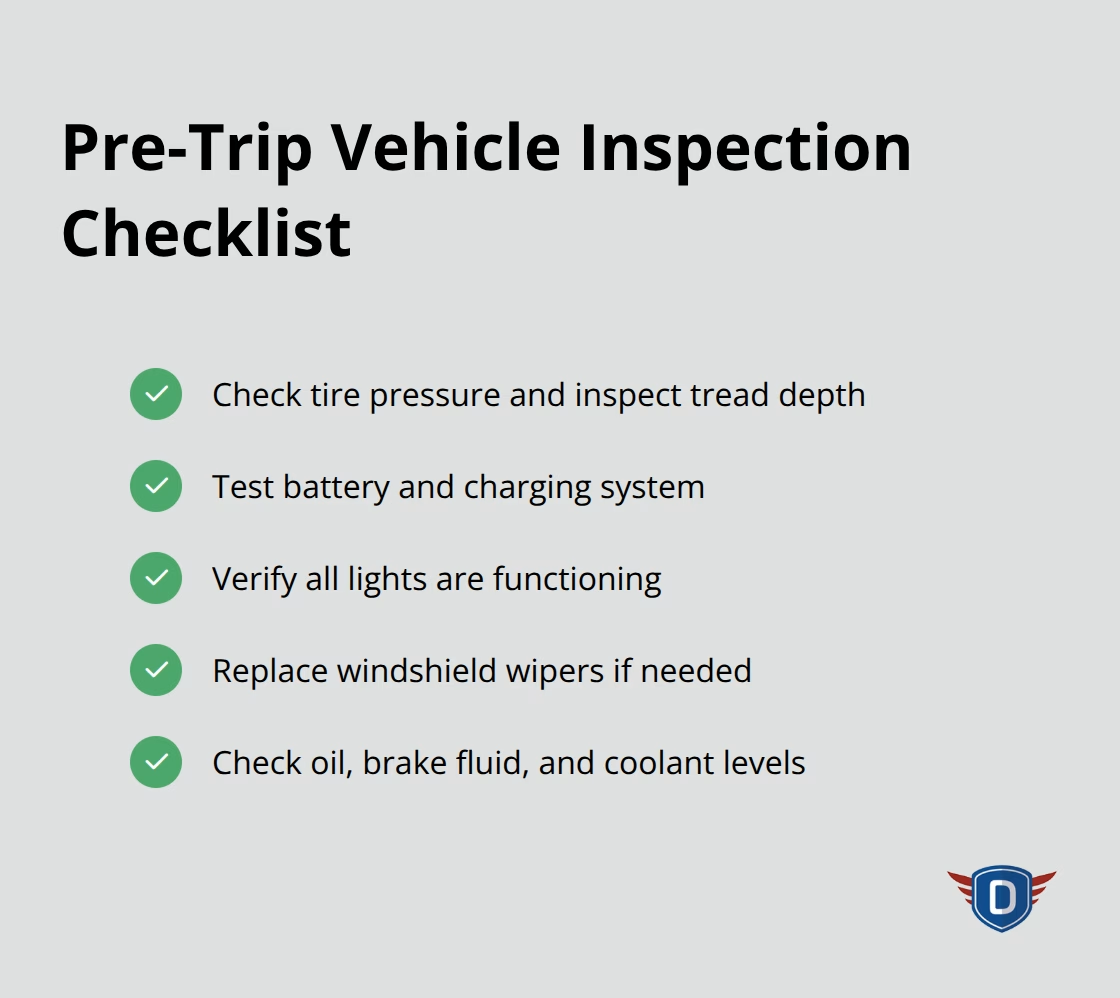
Strategic Route Planning Reduces Travel Risks
Plan departure times to avoid peak traffic periods – leave Tuesday night or Wednesday morning for Thanksgiving rather than Wednesday evening when traffic peaks. Monitor weather forecasts 48 hours before departure and identify alternate routes if severe conditions threaten your primary path. Use real-time traffic apps to track conditions, but program your GPS before you start to minimize distractions. Keep your gas tank full throughout winter travel since fuel lines can freeze, and electric vehicle owners should maintain charged batteries. Pack emergency supplies including blankets, water, non-perishable snacks, jumper cables, flashlight, first aid kit, and a shovel for winter conditions. Share your travel itinerary with family members and include planned stops and arrival times.
Fatigue Management Prevents Deadly Mistakes
Drowsy drivers cause approximately 91,000 police-reported crashes annually, making rest planning essential for holiday trips. Never drive more than eight hours without substantial breaks, and switch drivers every two hours on long journeys. Schedule overnight stops for trips that exceed 10 hours rather than push through. Avoid the hours between 2 AM and 6 AM when your body naturally experiences lowest alertness levels. Get adequate sleep for two nights before departure – one good night won’t compensate for chronic sleep debt. Pull over immediately if you experience heavy eyelids, frequent yawning, or drift between lanes.
These preparation steps create the foundation for safe travel, but once you hit the road, you’ll need specific defensive techniques to handle the aggressive drivers and unpredictable situations that holiday traffic brings.
How Do You Handle Aggressive Holiday Traffic
Master Safe Following Distances
Holiday traffic transforms normally predictable drivers into aggressive risk-takers who tailgate, weave between lanes, and make dangerous maneuvers. The three-second rule becomes your primary defense – count one-thousand-one, one-thousand-two, one-thousand-three between when the car ahead passes a landmark and when you reach it. Increase this to six seconds in poor weather conditions since wet roads extend your stops by up to 10 times.
When aggressive drivers tailgate you, resist the urge to speed up or brake-check them. Signal early and move to the right lane when safe, which allows them to pass. This technique reduces your stress levels and eliminates potential road rage incidents that spike during holiday periods.
Navigate Construction Zones Strategically
Construction zones and heavy traffic require specific tactics that most drivers ignore. Stay in the center of your lane rather than hug either side, which prevents aggressive drivers from attempting to squeeze past in insufficient space. Merge early when construction signs appear – drivers who wait until the last moment create dangerous bottlenecks where work zone safety remains a concern.
In stop-and-go traffic, maintain steady momentum rather than rapid acceleration and hard stops. This approach prevents accordion effects that contribute to rear-end collisions.
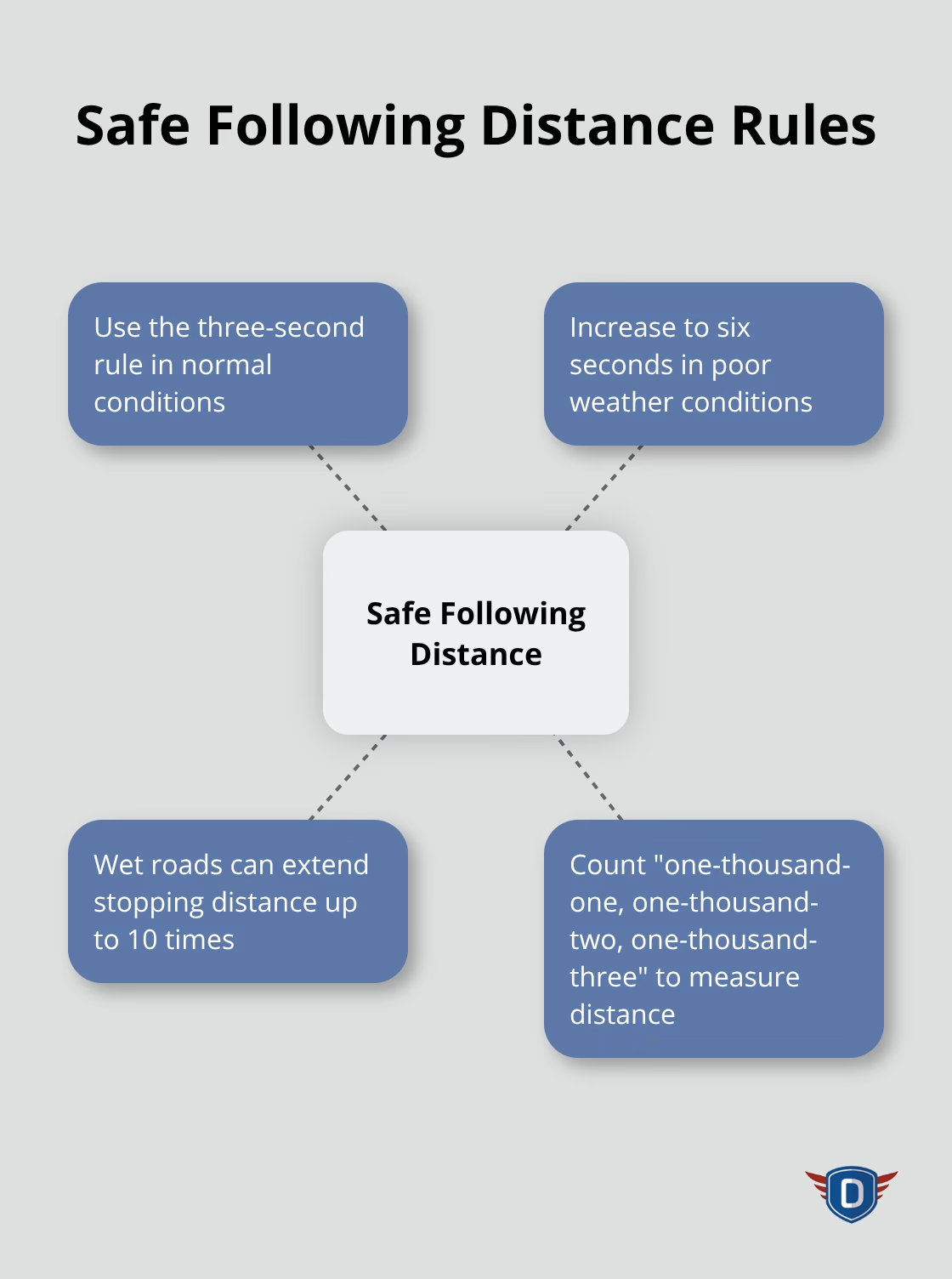
Position Yourself for Maximum Control
Keep both hands on the wheel at 9 and 3 o’clock positions for maximum control during sudden movements. Watch for erratic behaviors like sudden lane changes without signals, excessive speeds in congested areas, and vehicles that follow too closely. Create extra buffer space around these vehicles to protect yourself from their poor decisions.
Final Thoughts
Holiday travel safety depends on multiple protective strategies that work together to reduce your accident risk. Pre-trip vehicle inspections prevent mechanical failures, strategic route plans avoid peak congestion periods, and proper rest keeps you alert during long journeys. These safe driving tips for the holidays become more effective when you pair them with defensive techniques like safe following distances and smart positioning away from aggressive drivers.
Professional driver training builds the foundation for these safety practices. Certified instructors teach students to recognize dangerous situations before they develop and respond appropriately under pressure. These skills prove invaluable during holiday travel when traffic density increases and driver behavior becomes unpredictable (especially during peak periods like Thanksgiving and Christmas).
We at floridadetscourse.com focus on creating lifelong safe habits through comprehensive education programs. Our experienced instructors provide personalized guidance that helps students master essential skills and adopt safety-focused approaches. This training creates confident drivers who can handle challenging holiday conditions while protecting themselves and other road users.

